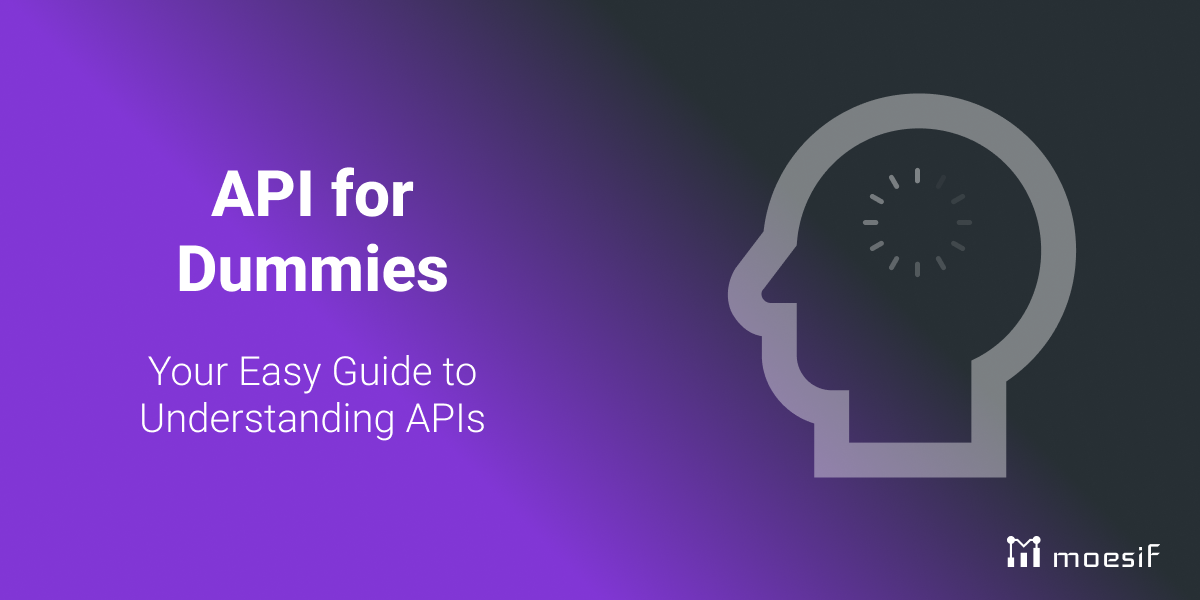API for Dummies: Your Easy Guide to Understanding APIs

If the term “API” puzzles you and you feel lost in a world of tech talk, this guide is for you. APIs, or application programming interfaces, act as the language that allows different software applications to talk to one another. Imagine you’re ordering a coffee at a cafe; the API is like the waiter who takes your order to the barista and then brings your coffee to you. This article demystifies APIs and gives you a basic understanding, showing their importance in the apps and services you use daily, with zero technical overwhelm.

Key Takeaways
- APIs, or Application Programming Interfaces, streamline communication between different software systems, allowing for faster development and easier incorporation of complex functionalities.
- Different types of APIs, including REST APIs, SOAP APIs, and database APIs, serve specific purposes based on use cases and accessibility. They have varying methods and formats for data exchange.
- Good API documentation is essential for developers as it guides proper usage and integration.
- Following API security best practices can protect your sensitive data.
- As your business grows, scaling strategies like load balancing ensure that API performance keeps pace with demand.
Demystifying the API: A Beginner’s Overview

API (Application Programming Interface) enables different software entities to communicate with each other by defining a set of rules. This allows for seamless interaction between various systems. An application programming interface acts like a middleman, delivering a user’s request to a system and then relaying the system’s response back to the user, much like a waiter in a restaurant.
APIs empower software developers to do the following:
- Produce streamlined code.
- Efficiently and rapidly build intricate functionality, including the use of RPC APIs (Remote Procedure Call APIs).
- Achieve faster development and improve maintainability of software systems.
But why should this matter to you? Well, imagine you’re building a web application. You want to incorporate a feature that provides weather updates. Instead of creating this feature from scratch, you can use a public API provided by a weather service. This saves you time and allows you to focus on other aspects of your app. This is the beauty of implementing APIs.
The Significance of APIs in Modern Software

APIs act as the glue that holds the digital world together. They serve as bridges, allowing software to communicate and share information seamlessly. APIs underpin the functionality of online services and applications that we rely on daily. APIs are not just technical tools, they drive innovation, enabling developers to do the following:
- Build upon existing platforms.
- Create new and innovative applications.
- Integrate different systems and services.
- Enhance user experiences.
- Increase efficiency and productivity.
Consider an online shopping platform. When you add an item to your cart, the website communicates with the inventory database to check whether the item is in stock. When you check out, the website interacts with a payment gateway to process your payment. APIs make all these interactions possible. They enable smooth communication and data exchange between different software and services, enhancing user experiences and driving business growth.
Breaking Down Different Types of APIs

Just like different tools exist for different tasks, different APIs have different needs. We can broadly classify them based on their use cases and accessibility into the following categories:
- Private APIs
- Partner APIs
- Public APIs
They each serve specific communication requirements.
Let’s delve deeper into three main types: RESTful services, SOAP APIs, and database APIs.
RESTful Services
RESTful APIs, also known as REST APIs, are based on the Representational State Transfer (REST) architectural style. REST APIs use standard HTTP methods like the following:
- GET retrieves data.
- POST sends data for creation or update.
- PUT updates or creates resources if they do not exist.
- DELETE removes resources.
These methods facilitate communication between client and server applications.
Responses from REST APIs can follow different formats. For example:
- JSON
- XML
- CSV
- Plain text
- HTML
This flexibility makes REST architecture a popular choice among developers.
Understanding SOAP APIs
SOAP APIs, on the other hand, use the SOAP (Simple Object Access Protocol) protocol for sending and receiving data and are often used for enterprise-level applications. SOAP uses XML, a software and hardware independent data format, for structuring messages in a consistent manner for information exchange.
SOAP APIs can operate over various protocols:
- HTTP
- SMTP
- TCP
- JMS
This robustness and flexibility make SOAP APIs especially powerful and ideal for complex, mission-critical systems.
Database API
Database API serves as a bridge between applications and database management systems. It provides an abstraction layer that handles the complexity of direct database operations. As a result, app developers have a simpler interface to work with and don’t need to write complex SQL queries.
These APIs assist in maintaining data integrity and consistency by simplifying and standardizing database operations like transactions and error handling. An example of a database API is Firebase, which provides real-time data syncing and storage capabilities for various applications.
How APIs Work

APIs follow the request-response model where a client sends a request to the API server and then receives a response after the server processes the request. The fundamental steps for calling an API involve composing valid HTTP requests and sending them to a valid API endpoint.
In a nutshell, the following steps make up an API call:
- Specifying the HTTP method for the request like GET, POST, PUT, or DELETE.
- Adding necessary HTTP headers.
- Sending the request to the API’s endpoint.
The server then processes the request and sends back a response. The response includes a status code indicating the outcome of the request. The response also often includes data in formats like JSON or XML.
Inspecting HTTP response status codes can help quickly identify communication issues between client and server applications. These are some common HTTP status codes:
- 200 (OK)
- 201 (Created)
- 202 (Accepted)
- 404 (Not Found)
- 500 (Internal Server Error)
Getting to Grips with API Integration

Integration testing for APIs can seem daunting, but it doesn’t have to be. It involves evaluating options, signing up for the service, looking for an API client library, writing code, and testing the integration. To ensure authorized access and prevent unauthorized usage, public APIs use API keys. Typically, you can obtain an API key by creating an account with the API provider, registering your app, and agreeing to the terms of service. Once you have your unique API key, you can start making requests to the API.
API integration testing plays a crucial role in the development life cycle. It includes validating that the API maintains the following qualities:
- Functionality
- Reliability
- Performance
- Security
For this, you can use tools like Postman or dedicated libraries in programming languages, as well as consulting interactive API documentation. With the right approach and resources, API integration can significantly enhance your app functionality and user experience.
The Role of HTTP in APIs
HTTP plays a pivotal role in APIs. APIs employ different HTTP methods:
- GET to retrieve data.
- POST to create resources.
- PUT to update existing resources.
- DELETE to remove resources.
The client calls the API with an HTTP request, which includes the HTTP verb and the resource’s URI, while the server processes this request and sends back an HTTP response with a status code indicating the outcome.
For example, consider the Twitter API. You can manipulate Tweets, Entities, Places, and Users using appropriate HTTP method. For example, GET request to retrieve Tweets, POST request for creating Tweets, DELETE request for deleting Tweets, and so on. Understanding the role and usage of HTTP in APIs is essential for successful API implementation.
Practical Examples of APIs in Action
Seeing is believing, right? Let’s look at some practical examples of APIs in action. Many of us use Google Maps to navigate our way around, but do you know that the interactive maps on various websites are made possible by the Google Maps Embed API. This public API allows developers to incorporate interactive maps into their websites, enhancing user experience.
Similarly, APIs are instrumental in various sectors. For instance, payment gateway APIs facilitate transactions in e-commerce, while geolocation services power location-based features in ride-hailing apps. These practical applications of APIs make our digital experiences smooth and seamless.
Web APIs and Web Scraping
Web APIs are a form of Remote APIs that use the HTTP protocol for sending request messages over a communications network. They enable a web application to communicate with servers, making requests and receiving structured responses using the well-established HTTP protocol.
Moreover, Web APIs play a pivotal role in web scraping, a technique to extract data from websites. Through Web APIs, you can access reliable public web data in various formats and according to a pre-defined schedule. This plays an important role in data extraction and subsequent analysis.
The Language of APIs
Communication is key, and for APIs, that communication happens through data formats like JSON and XML. APIs commonly utilize these formats to ensure data has the proper structure for effective communication between systems. JSON is preferred in API communication due to its lightweight nature, speed in parsing, and language-agnostic characteristics, making it suitable for web development, real-time applications, mobile apps, and more.
XML data format offers robustness and flexibility in representing complex structured data with support across different platforms. However, it can be verbose and impact performance. But XML remains essential for complex document exchanges and settings configurations.
Navigating API Documentation
Just like any tool, APIs come with a manual – the API documentation. It provides detailed instructions for developers on using and integrating an API effectively, significantly reducing the need for external support and associated costs.
Effective API documentation strives for the following tasks:
- Clearly outline the available endpoints.
- Specify necessary parameters.
- Explain expected responses.
- Provide use cases.
- Include a glossary to clarify technical terms.
- Include practical examples to illustrate usage.
Moreover, to maintain its usefulness, API documentation must receive continuous updates to reflect the latest changes and enhancements in the API. This ensures that all information is current and accurate. With good API documentation, even beginners and new users can navigate their way around APIs with ease.
Building Your First API Call
To call an API, first you need to know the exact Uniform Resource Identifier (URI ) of the data you want to access. A URI acts as a digital address of a piece of data. For example, the https://api.twitter.com/2/tweets endpoint of the Twitter API gives you access to Tweets.
Next, you must choose the proper HTTP request method for your use case. For example, use GET to retrieve data and POST to add new information.
The third step is adding the necessary HTTP headers. You must include a header that conveys the nature of the request and the format of the response you expect.
The final step involves authenticating the call so that the server knows that the request comes from an authorized entity. Common authentication techniques include API key, access token.
When you send the API call, the server then processes the request and sends back a response. The response includes a status code indicating the outcome of the request. It’s crucial to verify that the response status code matches expectations set out by global standards or the API’s documentation.
Security and Protocols in API Usage
Security is a top priority in the digital world, and APIs are no exception. Especially large enterprises serving thousands of customers must take an uncompromising approach to maintaining API security .
For this purpose, different authentication mechanisms exist—for example, OAuth 2.0, OpenID Connect, and JSON Web Tokens (JWTs). They authenticate and authorize access, manage permissions, and track usage.
To ensure the security of your APIs, it is important that you pay attention to the following:
- Conduct API risk assessments.
- Encrypt data.
- Perform server-side validation.
- Return only essential information in responses.
By following these practices, you can protect sensitive data and ensure the security of your APIs.
Moreover, you can implement rate limits and quotas for API traffic along with recognizing threats such as broken authorization, authentication issues, and injection flaws. These are essential to maintain API confidentiality, availability, and integrity. With the right security protocols in place, APIs can function safely and effectively.
Scaling Up From Simple Requests to Complex Integrations
As your business grows, you’ll need to scale your APIs from simple requests to complex integrations. Scaling APIs is a key strategic decision for different reasons:
- Accommodating business growth.
- Improving user retention.
- Ensuring consistent user experience.
- Enhancing cost efficiency.
This can involve implementing the following strategies:
- Load balancing to evenly distribute incoming API requests.
- Regularly monitoring API performance and usage patterns.
- Employing cloud providers and tools to accommodate business growth.
With these strategies, your APIs can adapt and grow along with your business.
Tips for Troubleshooting Common API Issues
No technology is perfect, and APIs are no exception. Troubleshooting common API issues requires a systematic approach. Analyzing HTTP status code, utilizing monitoring tools, and leveraging community platforms and support resources can lead to effective problem resolution.
Common issues include incorrect request syntax and invalid data parameters. Server logs often provides the necessary details to address the root cause for resolution. So make sure to enable proper logging and monitoring so that you have all the information you need when an issue occurs.
Summary
We’ve taken a deep dive into the world of APIs, unpacking everything from the basics to the more technical aspects. APIs work as the gears that keep the digital world turning, facilitating seamless communication between software entities, driving innovation, enhancing user experiences, and powering our favorite apps. By understanding APIs and how to use them, we can unlock endless possibilities in the realm of software development.
Now that you have a broad understanding about API and what it can do for you, you can start building your own ideas and incorporating APIs into them. Moesif can help you in this journey with its comprehensive set of API analytics tools. Understanding your API early on can give you a head start on the competition and your goals. And if you want to monetize your API, Moesif has you covered with powerful monetization tools that work seamlessly across different billing providers and suit your business strategy. Sign up today for a free trial, no credit card required.





